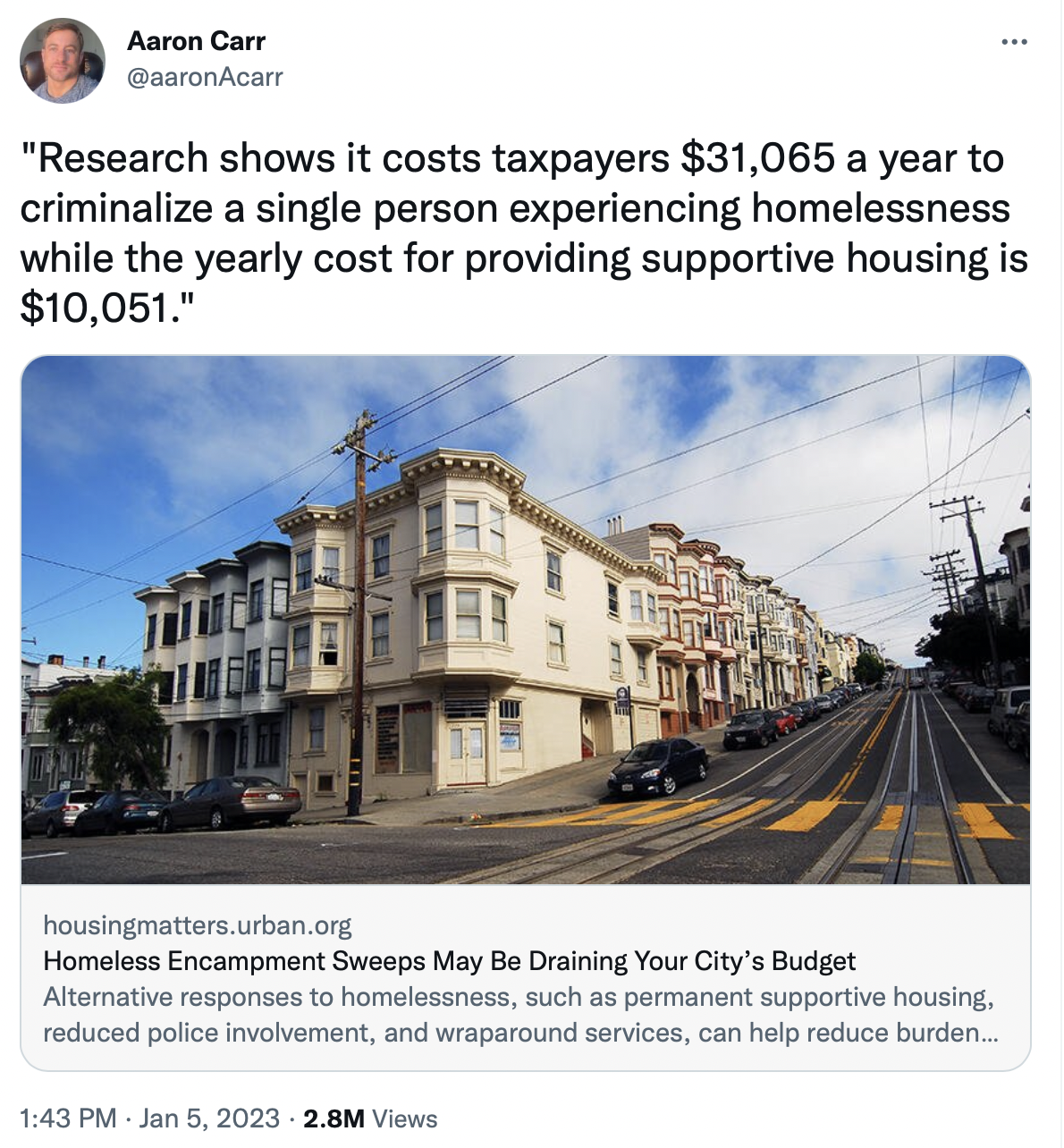The HomeWork: January 19, 2023

Welcome to the January 19, 2023 Main edition of The Homework, the official newsletter of California YIMBY — legislative updates, news clips, housing research and analysis, and the latest writings from the California YIMBY team.
News from Sacramento
On January 4th, the Legislature officially reconvened for the 2023 – 2024 legislative session, and thus far, there have been over 306 bills introduced. In addition, leadership from both chambers has introduced their membership assignments for the Legislative year.
Most notably, Senator Scott D. Wiener (D-San Francisco) will remain Chair of the Senate Housing Committee, and Senator Anna M. Caballero (D-Merced) will remain Chair of Senate Governance and Finance.
On the Assembly side, Assemblymember Buffy Wicks (D-Oakland) will stay Chair of the Assembly Housing and Community Development, and Assemblymember Cecilia Aguiar-Curry (D-Winters) will remain the Chair of the Assembly Local Government Committee.
This week Governor Gavin Newsom released his proposed budget for the 2023 – 2024 fiscal year. To read California YIMBY’s response to the budget, click here.
Please be on the lookout as California YIMBY will introduce our legislative priorities in the coming weeks!
Housing Research & Analysis
Location: Still the Critical Factor in Affordable Housing
It’s not enough to merely build subsidized affordable housing — housing location matters at least as much as availability; in addition to secure, affordable shelter, humans need access to quality transit, walkable neighborhoods, minimal exposure to health and environmental risks, and ample access to social and economic opportunities.
A new report by Ong et al. (2022) investigates the extent to which we succeed in the task of locating new subsidized affordable housing where it’s needed most.
Key takeaways:
- Housing Choice Voucher (HCV) and Low-Income Housing Tax Credit (LIHTC) homes are increasingly likely to be in areas with lower vehicle-miles traveled (VMT) and better walkability and transit.
- However, HCV and LIHTC units also tend to be in areas with poor air quality and higher rates of traffic violence. These units also tend to be concentrated in neighborhoods of color and neighborhoods characterized by higher rates of unemployment.
It Takes More than an (Urban) Village
To stimulate housing production, many California cities have experimented with loosening their restrictive land-use regulations. Yet not all of these reforms have been equally successful in producing housing. Indeed, Gabbe et al. (2021) find evidence that San Jose’s “urban villages” program had, as of 2019, failed to stimulate the levels of housing production that had been envisioned by proponents.
Key takeaways:
- Since 2011, San Jose has adopted a series of “urban village” plans to stimulate development at mixed-use, multimodal nodes across the city.
- The researchers failed to find evidence of increased infill housing as a result of the program, hypothesizing that this was because the program came with few actual zoning changes; was too complex to elicit developer participation; and called for a type of development potentially out-of-sync with market conditions.
Houser Headlines
- The next phase of California housing reforms? Climate-safe homeownership | CalMatters
- Commentary: CEQA Abuse Is a Big Problem for California Housing | Davis Vanguard
- LA County Declares State Of Emergency On Homelessness | LAist
- Yes, Homelessness Is a Housing Problem | Voice of San Diego
- Study: California ranks third among worst renter states
- CityLab Daily: Subsidized Renters Struggle to Find Housing Amid Costly Rents | Bloomberg
- California files first Section 8 discrimination lawsuit
- This map shows the parts of SF zoned for single-family homes | SF Chronicle
- Editorial: L.A. needs to build housing quickly. So why is the City Council sitting on plans to expedite construction? | LA Times
- How Zoning Changes Could Boost Housing Supply in Seattle | Planetizen News
YIMBY Social – Top Posts

Share the good word
We welcome your ideas and feedback — send story tips and ideas to Homework@cayimby.org.